
|
A fragment of the Emigrant Trail.
|
|
Other articles:
• Field Notes:
4 Sept 2018;
• Oregon Buttes Road:
at Emigrant Trl;
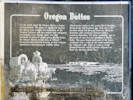 Interpretive panel for Oregon Buttes Interpretive panel for Oregon Buttes
|
Junction: Oregon Buttes Road
Oregon Buttes
| |
To the south stand the Oregon Buttes, a major
trail landmark. The name is significant because
the Buttes were roughly the beginning of the
Oregon Territory and also helped keep emigrants
encouraged, even though there were still
hundreds of miles of rough going ahead. Today,
the Oregon Buttes are an Area of Critical
Environmental Concern because of their cultural
significance and important wildlife values.
| |
About twelve miles to the soutwest of Oregon
Buttes is the Tri-Territory site. This site is the
location where the Oregon Territory, Mexican
Territory, and Louisiana Purchase has a
common boundary. The large landmark, just to
the south of w[h]ere you are standing, is Pacific
Butte. The great height and mass of the butte,
combined with a ridge to the north paralleling
the emigrant trails, helps to create a visual
channel through which travelers migrated on
their way through South Pass.
|
|
|
Literature Cited:
- Tyrrell, Pat, n. d..
Other articles:
• Field Notes:
4 Sept 2018;
• Wyoming Transbasin Water Transfer:
20110;
20130;
Locations:
Summit of the Original South Pass.
|
South Pass
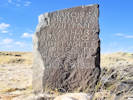
Marker at South Pass. |
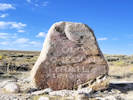
Marker for Old Oregon Trail. |
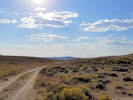
The view west. |
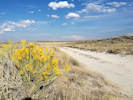
The view east |
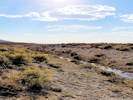
A ditch carries Sweetwater River water across the continental divide. |

South Pass |
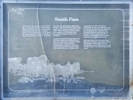
Interpretive panel for South Pass. |
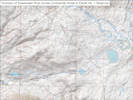
How water gets diverted from the Sweetwater River. |
South Pass
| |
South Pass was discovered in 1812
by a small party of Astorians led by
Robert Stuart as they traveled east
with dispatches for John Jacob
Astor. It was “rediscovered” in 1824
by a party led by Jedediah Smith as
they searched for a winter crossing
through the Wind River Mountain
Range. William Sublette led a small
caravan of wagons to South Pass in
1828. While the party did not take
the wagons over the pass, they
proved that wagon travel was
possible.
| | Captain Benjamin Bonneville took
the first wagons over South Pass
into the Green River Basin in 1832.
But it wa Lt. John Charles
Fremont who would be credited
with widely publicizing the route
over South Pass as a result of his
expedition in 1842. Scattered
references to the easy passage over
the Rocky Mountains has appeared
in newspapers for a decade, but
Fremont ignited enthusiasm for
South Pass by explaining that a
traveler could go th[r]ough the pass
without any “toilsome ascents.”
| |
With the discovery of South Pass,
the great western migration began.
Thousands of Mormons, future
Oregonians and Californians would
use the trail in the following twenty
years.
| |
Donated by the Trans Sierra Alliance, E. Clampus Vitus
|
|
|
If you have a question or a comment you may write to me at:
tomas@schweich.com
I sometimes post interesting questions in my FAQ, but I never disclose your full name or address.
|
[Home Page] [Site Map]
Date and time this article was prepared:
5/12/2025 3:00:56 PM
|
 Eastern Mojave Vegetation
Eastern Mojave Vegetation
 Eastern Mojave Vegetation
Eastern Mojave Vegetation
